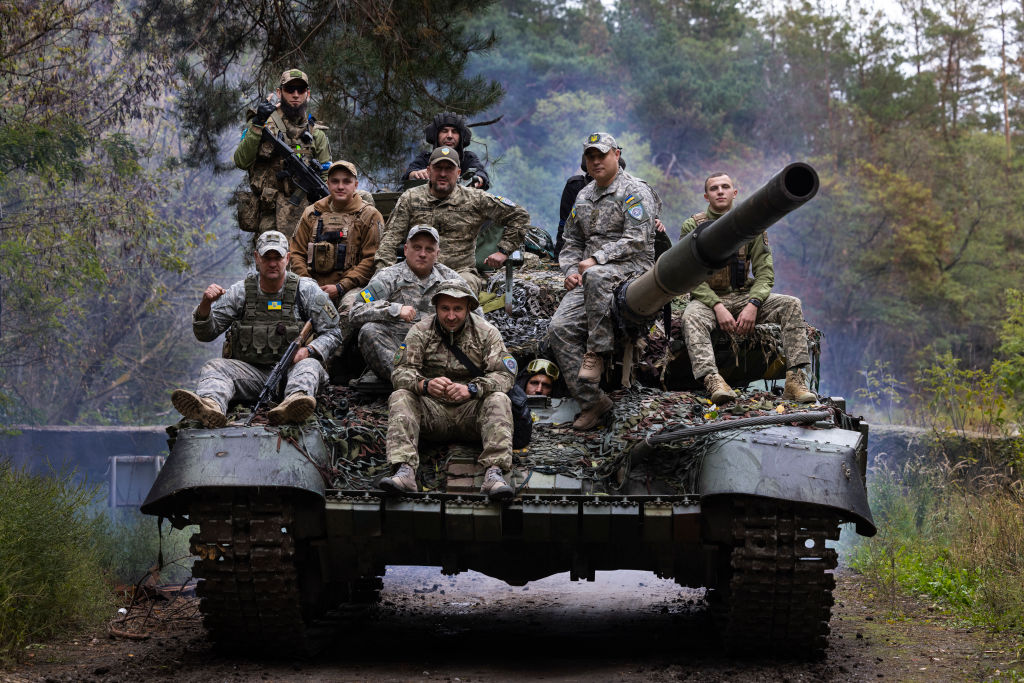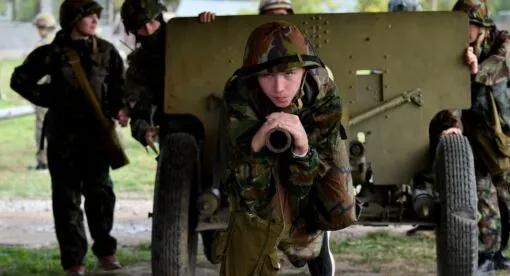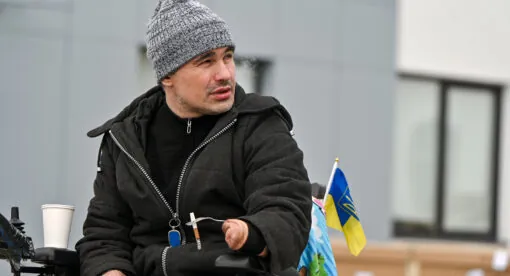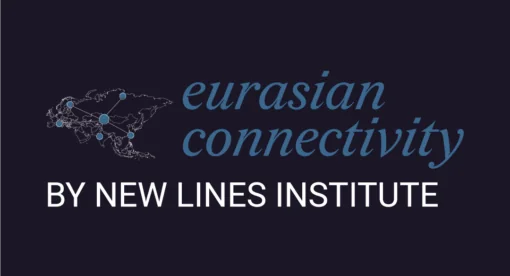Listen to article
When the Russian invasion of Ukraine began in February 2022, some observers and Western officials predicted Ukraine would fall rapidly to the invading Russian Army. Since then, Ukraine’s tenacious defense has pushed the Russian military out of the northern and central parts of the country. While this was owed more to Russia’s overextension of its limited resources and less to the offensive capability of the Ukrainian military, beginning Sept. 6, Ukraine achieved stunning success in driving Russian forces back from Kharkiv and pushing them to the eastern bank of the Oskil River. This counteroffensive largely came as a surprise after much focus in the international press was put on the much slower Ukrainian advance toward Kherson in the south. Ukraine has claimed the Kherson operation was a deliberate deception meant to mislead the Russian military and encourage it to shift forces away from their positions in the north.
Ukraine’s successful counteroffensive shows that the U.S. policy of supplying the Ukrainian military with weapons and equipment is working and that the Russian military is gradually losing its ability to dominate the battlefield.
Ukraine’s Advantages
Ukraine has benefited from its growing advantages and Russia’s increasingly pronounced weaknesses. Since the war began, Ukraine has greatly expanded the size of its armed forces and mobilized the whole nation around a common cause of national defense. This has ensured that Ukraine has a steady stream of soldiers motivated to defend their country and liberate occupied areas.
This motivation has been coupled with substantial Western support, particularly from the U.S. and U.K., in the form of equipment and training. The U.S. has sent up to $13 billion worth of funds and equipment, including advanced weapons systems such as sophisticated artillery and drones. The U.K. is hosting rotations of up to 10,000 Ukrainian troops for basic training in complete safety with experienced instructors.
Ukraine remains at a disadvantage in aircraft, artillery, and heavy equipment. Sim Tack, a military analyst at Force Analysis with contacts in Ukraine, said Ukrainian front-line commanders have complained that tactical intelligence being shared by Western partners is not being filtered down from Kyiv in a timely manner. However, these are teething issues that can be overcome with time and sufficient investment.
In contrast, Russia is facing a significant and rapid decline in its strength. Analysis of Russian performance since February shows that many of its units were deeply deficient in strength. Moreover, testimonies from former servicemen – even from what were perceived to be elite units – show corruption was more endemic than estimated, leaving units poorly equipped, trained, and led. Sanctions have also greatly diminished Russia’s ability to make up for its losses as inputs such as microchips, lasers, and other electronic systems, critical for advanced weapons and vehicle systems, can no longer be freely imported. Russia does have vast stockpiles of military equipment, but evidence indicates that much of this is in poor condition.
Despite its drawbacks, Russia has been adapting to Ukraine’s tactics, first by pulling back and establishing a shorter front line and then by using its advantage in artillery and airpower to saturate Ukraine’s front lines, making a counteroffensive difficult and allowing Russia to advance gradually in Donetsk using bite-and-hold tactics. Nonetheless, Russia continues to face diminishing equipment and manpower, and on Sept. 21 President Vladimir Putin announced a “partial mobilization” of Russians to serve. Before this decision, Russia had been forced to rely on battalions and troops from their puppet regimes in Donetsk and Luhansk, many of whom were unwillingly conscripted into service. These troops were extremely ill equipped, often using weapons that date to World War II. Russia also clearly remains hampered by its military doctrine, which discourages initiative and require complete obedience to the chain of command. In practice, this means most Russian officers wait for orders from seniors before taking action or reacting.
Kharkiv Counteroffensive
According to open-source geospatial intelligence provided by Sim Tack, Russia’s disadvantages were its undoing in Kharkiv. Ukrainian units broke through the Russian ranks, which were stretched thin after having shifted forces to Kherson. Ukraine moved rapidly, facing only garrisons of Donetsk and Luhansk forces along with lightly equipped Rosguyardia (Russian National Guard) troops. As word of the unfolding disaster spread over Russian Telegram channels, already demoralized Russian forces began to flee. Ukraine was able to advance to the Oskil River, liberating a significant amount of territory.
How the next stage of the battle for Ukraine will progress relies largely on the ability of the Ukrainian military to sustain its offensive. Russia has reinforced Kherson and built defenses, using saturation fire and air support to hamper the Ukrainian advance, and it has used local rivers as natural obstacles to limit Ukraine’s ability to exploit weak points in its line. If the two sides consolidate across the Oskil from one another, it is likely that that front line will become the site of a renewed war of artillery. However, if Ukraine can sustain its advances and cross the Oskil, it could significantly affect Russia’s defenses in the south, putting pressure on Donetsk and Luhansk. From there, Ukraine could push toward the Sea of Azov coast and threaten Russia’s land bridge to Crimea.
Russia has suffered major casualties, but it could still seek to deploy additional troops from its remaining reserves to help stymie Ukrainian advances. However, the question will become how much of its military it is willing to sacrifice in a war that has inflicted an estimated 50,000 casualties and has seen continuous territorial losses since April, with only minimal gains. Overcommitting to Ukraine will greatly diminish Russia’s ability to deter NATO and greatly reduce its ability to project power internationally. Losses to Russian strategic assets will already take decades to recover from, and the mobilization announcement – which has already sparked the largest unrest since the war began – will not fix the fundamental issues with the Russian military: lack of a clear mission, sufficient logistical supplies, or mission-focused leadership.
Recommendations
Ukraine likely could repeat its success in Kharkiv elsewhere over the long term if it retains Western support, which is likely to continue, given its effective use of the resources it’s already received, such as Switchblade drones, HIMAR missile systems, and the Javelin anti-tank system. The U.S. should continue providing training, equipment, and funds to Ukraine.
Washington also should continue to enforce damaging economic sanctions on Russia. Support for Ukraine remains a popular policy with voters in donor countries, even in nations like Germany that are more vulnerable to Russia’s energy threats. This support could erode, however, especially in Europe in the face of a harsh winter. To this end, the U.S. should closely examine new policies to help ease Europe’s issues with gas supply. Though there is little that can be done to address immediate concerns, in the long term the U.S. can increase gas production and exports to Europe and by helping to fund the construction of alternative energy systems. This coming winter, the U.S. role will be to help ensure European nations do not deviate from the sanctions regime through diplomatic pressure. As the Russian regime has proven to be a wholly unreliable partner and Europe has constructed a gas sharing-plan with, stockpiles now running at more than 80%, it is unlikely that Europe will fall into a heating crisis.
The U.S. must also restrain itself from trying to influence the Ukrainian negotiating position. Ukraine has the primary agency in the war, and its government will decide what kind of future peace its people will accept. The U.S. should not be seen as undercutting Ukraine or asserting pressure toward a quicker but less equitable peace. Military assistance should also not be withheld so long as the conflict remains in the pre-2014 internationally recognized territories of Ukraine.
It is in the U.S. interest to be steadfast in supporting Ukraine both during the conflict and after. Washington should communicate to Russia and its allies that a peace accord Ukraine finds acceptable will set off immediate sanctions relief. While this may delay justice for war crimes committed by Russians, it will also serve as a strong incentive to reach a realistic accommodation with Ukraine.
Ultimately, U.S. support of Ukraine has strengthened its international reputation and strategic position. The U.S. can only continue gain diplomatic credibility and power balance by remaining resolute in the face of Russia’s aggression. Russia has destroyed its military capabilities, its economy, and much of its diplomatic credibility. It will take Russia years to recover from the conflict, leaving it to play an increasingly diminished role in global affairs. From a perspective of great-power competition, this only benefits the U.S.
Jeff Hawn is an independent geopolitical risk consultant and a tactical analysis expert. Previously, Hawn worked for four years as an OSINT analyst with the private intelligence firm, Stratfor where he specialized in domestic extremism and civil unrest. He is also a Ph.D. candidate at the London School of Economics in international history centered on the Russian constitutional crisis of 1993 and the emergence of the post-Cold War world order. He tweets at @jeff_hawn.
The views expressed in this article are those of the author and not an official policy or position of the New Lines Institute.







